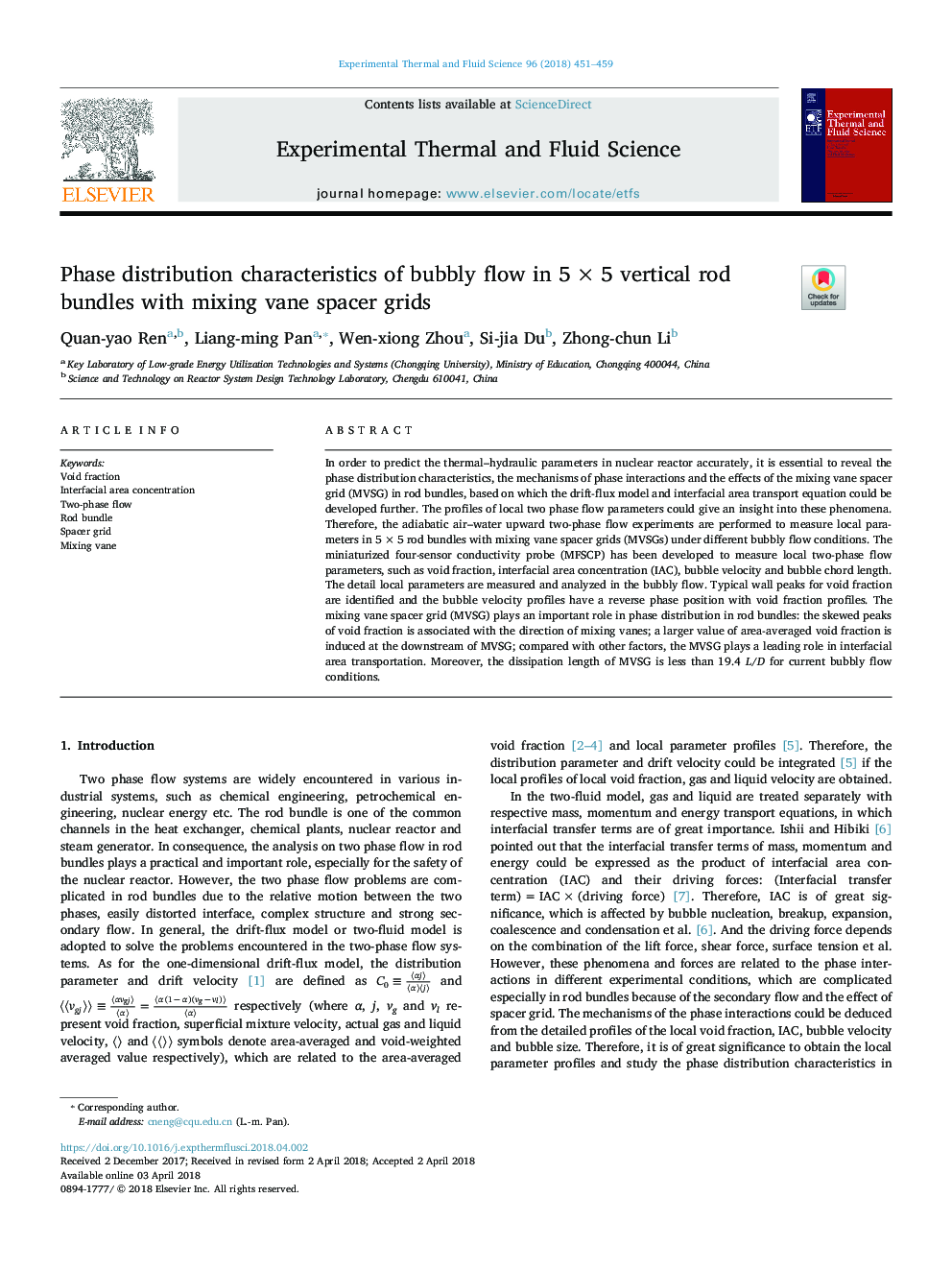| Article ID | Journal | Published Year | Pages | File Type |
|---|---|---|---|---|
| 7051724 | Experimental Thermal and Fluid Science | 2018 | 9 Pages |
Abstract
In order to predict the thermal-hydraulic parameters in nuclear reactor accurately, it is essential to reveal the phase distribution characteristics, the mechanisms of phase interactions and the effects of the mixing vane spacer grid (MVSG) in rod bundles, based on which the drift-flux model and interfacial area transport equation could be developed further. The profiles of local two phase flow parameters could give an insight into these phenomena. Therefore, the adiabatic air-water upward two-phase flow experiments are performed to measure local parameters in 5â¯Ãâ¯5 rod bundles with mixing vane spacer grids (MVSGs) under different bubbly flow conditions. The miniaturized four-sensor conductivity probe (MFSCP) has been developed to measure local two-phase flow parameters, such as void fraction, interfacial area concentration (IAC), bubble velocity and bubble chord length. The detail local parameters are measured and analyzed in the bubbly flow. Typical wall peaks for void fraction are identified and the bubble velocity profiles have a reverse phase position with void fraction profiles. The mixing vane spacer grid (MVSG) plays an important role in phase distribution in rod bundles: the skewed peaks of void fraction is associated with the direction of mixing vanes; a larger value of area-averaged void fraction is induced at the downstream of MVSG; compared with other factors, the MVSG plays a leading role in interfacial area transportation. Moreover, the dissipation length of MVSG is less than 19.4 L/D for current bubbly flow conditions.
Related Topics
Physical Sciences and Engineering
Chemical Engineering
Fluid Flow and Transfer Processes
Authors
Quan-yao Ren, Liang-ming Pan, Wen-xiong Zhou, Si-jia Du, Zhong-chun Li,
